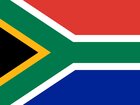The Republic of South Africa joined the Southern African Development Community (SADC) as the 11th Member State in April 1994 and attended the SADC Summit for the first time in August 1994. A statement of accession to the SADC Treaty was delivered by the then Vice President of the country, Thabo Mbeki, marking a major milestone for regional integration, after a long process in which the SADC Region was at the centre.
South Africa occupies the southern-most part of the African continent stretching from the Limpopo River in the north to Cape Agulhas in the south. The country shares borders with Namibia, Botswana to the west, and Zimbabwe in the north, with Eswatini and Mozambique in the north east. It also entirely surrounds the Kingdom of Lesotho. To the west, south and east, South Africa borders the Atlantic and southern Indian oceans.
The country’s first democratic elections were held in 1994. Since then, democratic elections are held every five years and the Head of State is the President. The South African economy is the most advanced on the African continent, with a sophisticated financial system that includes one of the top 10 stock exchanges in the world, and well developed physical, telecommunications, and energy infrastructures.
Please refer to the latest SADC Statistics Yearbook

